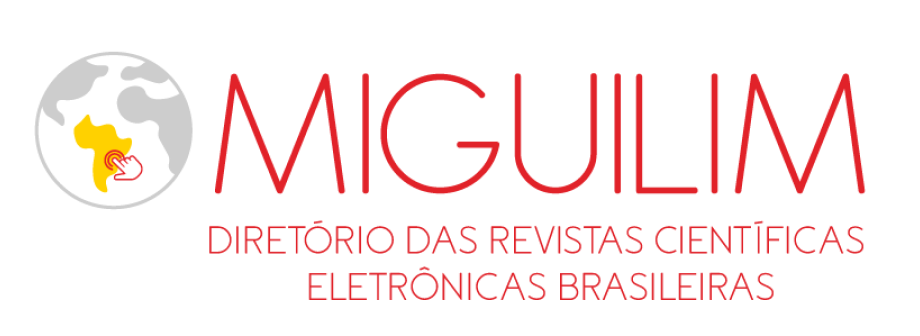Pollutants of emerging interest (caffeine) in the barigui river
DOI:
https://doi.org/10.5281/zenodo.15061941Keywords:
Caffeine, Statistical analysis, Correlation, Emerging pollutantsAbstract
Aquatic ecosystems have been degraded over the years through anthropic activities with disorganized population growth has generated much problem for large cities resulting in damage to aquatic organisms and humans. The lack of basic sanitation causes an increase in the concentration of organic matter, nutrients and compounds of emerging interest through untreated or poorly treated household waste. The present study collected samples of 4 distinct points in the Barigui River. Physical and chemical analyzes of this water were carried out to verify which parameters of water quality were in accordance with the standard established by the standard and also to determine the influence or dependence that the other parameters exert on caffeine with the most significant parameters that were analyzed. The results found in the Barigui river basin adjacent to the metropolitan area of the city of Curitiba show the impact of the antropic activity in this river. The results show the presence of compounds requiring Oxygen, characterized by parameters such as COD and NH3, which showed a high correlation with caffeine (r greater than 0.9), evidence of its common source in the same way, a strong association was found of the metals analyzed with caffeine (greater than 0.8), which represents the influence that also has industrial dumping in the Barigui river.
Downloads
References
ANDREOLI, C. V.; Dalarmi, O.; Lara, A. I.; Andreoli, F. N. (1999). Os Mananciais de Abastecimento do Sistema Integrado da Região Metropolitana de Curitiba – RMC. SANARE – Revista Técnica da Sanepar, v. 12, n. 12.
AUER, A. M. Avaliação dos processos de ocupação antrópica da Bacia do Rio Barigui e suas implicações ecológicas, 155 f. (2010). Tese (Doutorado em Ciências Florestais) – Setor de de Ciências Agrárias, Universidade Federal do Paraná, Paraná.
BAIRD, C.; Cann, M. (2011). Química Ambiental. 4ed. Porto Alegre: Bookman.
BRASIL, Resolução CONAMA n°357, de 17 de março de 2005. Classificação de águas, doces, salobras e salinas do Território Nacional. Publicado no D.O.U, 2005.
BROWN, T. L.; Lemay, E.; Bursten, B. E. (1999). Química: A Ciência Central. 7ed. Rio de Janeiro: LTC.
CHELLA, M. R.; Fernandes, C. V. S.; Fermiano, G. A.; Fill, H. D. (2005). Avaliação do transporte de sedimentos no rio Barigüi. Araucária. RBRH: Revista Brasileira de Recursos Hídricos, v. 10, n. 3, p. 105-111, Jul./Set.
ESTEVES, F. A. (1998). Fundamentos de Limniologia. 2ed. Rio de Janeiro: Interciência.
FERREIRA, A. P. (2005). Caffeine as an environmental indicator for assessing urban aquatic ecosystems. Caderno de Saúde Pública, Rio de Janeiro, v. 21, n. 6, p. 1884-1892.
FILL, H. D.; Santos, I. Dos; Fernandes, C. V. S.; Toczeck, A.; Oliveira, M. F. de. (2005). Balanço hídrico da bacia do Rio Barigüi, PR. RA'E GA-O Espaço Geográfico em Análise, n. 9, p. 59-67.
FROEHNER, S.; Martins, R. F. (2008). Avaliação da composição química de sedimentos do Rio Barigui na região metropolitana de Curitiba. São Paulo: Química Nova, v. 31, n. 8.
GARDINALI, P. R.; Zhao, X. (2002). Trace determination of caffeine in surface water samples by liquid chrom atography-atmosferic pressure chemical ionization-mass spectrometry (LC-APCI-MS). Environment International, n. 28, p. 521- 528.
IDE, A H.; Cardoso, F. D.; Santos, M. M. Dos; Kramer, R. D.; Azevedo, J. C. R. De; Mizukawa, A. (2013). Utilização da Cafeína como Indicador de Contaminação por Esgotos Domésticos na Bacia do Alto Iguaçu. RBRH: Revista Brasileira de Recursos Hídricos, v. 18, n.2, p.201-2011, Abr./Jun. Instituto Das Águas Do Paraná; Comitês de Bacia hidrográfica. Recuperado em 19 de julho de 2017, de http://www.aguasparana.pr.gov.br/modules/conteudo/conteudo.php?conteudo=79.
NETO, D. M.; Froehner, S.; Sanez, J. (2017). Spatial variation of metals and phosphorus in sediments of a river influenced by urbanization. RBRH: Revista Brasileira de Recursos Hídricos, v. 22, e14.
PELLER, K. A.; Opsahl, S. P.; Chanton, J. P. (2006). Tracking anthropogenic inputs using caffeine, indicator bacteria, and nutrients in rural freshwater and urban marine systems. Environmental Science & Technology, v. 40, n. 24, p. 7616-22.
RAIMUNDO, C. C. M. (2007). Ocorrência de interferentes endócrinos e produtos farmacêuticos nas águas superficiais da Bacia do Rio Atibaia. Dissertação (mestrado em Química Ambiental), Universidade Estadual de Campinas, Campinas.
SENNA JUNIOR, Vicente Antonio de (2005). Saneamento e saúde: malha hidrográfica da Leopoldina e impacto das doenças de veiculação hídrica no município do Rio de Janeiro. Tese de Doutorado.
Superintendência De Desenvolvimento De Recursos Hidricos E Sanemaneto Ambiental (SUDERSHA). (2002). Plano Diretor de Drenagem para a bacia do rio Iguaçu na região metropolina de Curitiba.
WEIGEL S., Berger U., Jensen E., Kallenborn R., Thoresen H., Huhnerfuss H. (2004) Determination of selected pharmaceuticals and caffeine in sewage and seawater from Tromso/Norway with emphasis on ibuprofen and its metabolites. Chemosphere, v. 5, p. 583-592.
Published
How to Cite
Issue
Section
Copyright (c) 2021 Revista Processando o Saber

This work is licensed under a Creative Commons Attribution 4.0 International License.
Os direitos autorais dos artigos publicados pertencem à Revista Processando o Saber e seguem o padrão Creative Commons (CC BY), que permite o remixe, adaptação e criação de obras derivadas do original, mesmo para fins comerciais. As novas obras devem conter menção ao(s) autor(es) nos créditos.
























